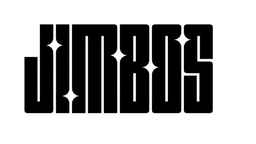How to Polish Your Car Like a Pro — One-Step vs Two-Step Polish Explained
Want deep, glossy paint? In this simple guide, I’ll show you how to polish your car like a pro — and explain when to use a one-step vs two-step polish for the best results.
Polishing is where the magic happens in detailing. It’s the step that brings out the gloss, depth, and clarity in your paint — and corrects imperfections like:
- Swirl marks
- Light scratches
- Oxidation
- Haze and dullness
But many people get confused about how to polish — and whether they should do a one-step or two-step process.
In this post, I’ll break it all down:
- What polishing actually does
- When to use one-step vs two-step polishing
- How to polish your car safely
- The best polish to use for pro results
What Does Polishing Do?
Polishing uses fine abrasives to level the paint’s surface, removing imperfections and creating a smooth, clear finish. The result:
- Deeper gloss
- Sharper reflections
- Better color clarity
- Improved protection longevity (coatings bond better to polished paint)
👉 Related Post: The Truth About One-Step Polishes
One-Step vs Two-Step Polishing — What’s the Difference?
One-Step Polish:
- Combines cut and finish in one product
- Removes light to moderate defects
- Leaves a high-gloss finish in one pass
- Perfect for maintenance polishing or faster jobs
Two-Step Polish:
- Step 1: Heavy cut compound to remove deeper defects
- Step 2: Finishing polish to refine the finish to perfection
- More time-consuming but can achieve maximum correction
- Best for heavily damaged or neglected paint
👉 In most cases, a modern one-step polish like Picture Perfect Polish is more than enough — especially when used with the right pad.
How to Polish Your Car — Step by Step
Step 1 — Wash and Decontaminate
Start with a proper wash and clay to remove all contaminants. This ensures your pad doesn’t pick up debris that can scratch the paint.
Recommended products:
- The Super Soaper — Pre-soak and wash
- Orange Wash Microfiber Towel — Safe contact wash
- Clay Bar or Clay Mitt — Paint decontamination
Step 2 — Choose Your Polish and Pad
For most cars, a high-quality one-step polish like Picture Perfect Polish paired with a foam polishing pad works perfectly.
Want more cut? Use a more aggressive pad. Want a finer finish? Use a softer pad.
Step 3 — Work in Sections
Apply a few pea-sized drops of polish to your pad. Work a 2x2 foot section at a time:
- Spread the polish at low speed to prime the area
- Increase to medium speed (4–5 on most DA polishers)
- Make overlapping passes — 3–4 passes per section
- Reduce pressure on final passes for a finer finish
Step 4 — Wipe and Inspect
After polishing each section, wipe off residue with a clean microfiber towel. Inspect your work — adjust technique or pad choice as needed.
Step 5 — Protect Your Polished Paint
Once you’ve finished polishing, protect your hard work with a ceramic spray coating like Tough As Shell Ceramic Spray.
👉 Related Post: How to Prep Your Car for Ceramic Spray Coating
Recommended Products for Polishing
- Picture Perfect Polish — One-step polish with excellent cut and finish
- Tough As Shell Ceramic Spray — Protection after polishing
- Orange Wash Microfiber Towel — Safe contact wash pre-polishing
Conclusion
Polishing doesn’t have to be complicated. In fact, with modern products like Picture Perfect Polish, you can achieve incredible results with just a one-step process.
For most cars, one-step polishing is all you need to dramatically improve gloss and clarity. Only reach for a two-step process when chasing perfection on heavily damaged paint.
Start with this simple guide, and you’ll be polishing like a pro in no time!




